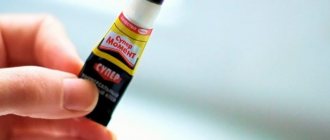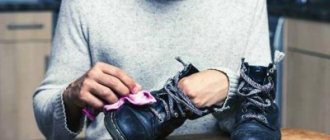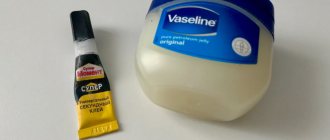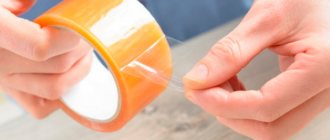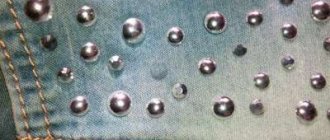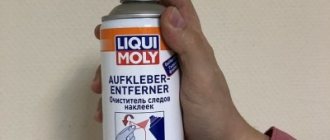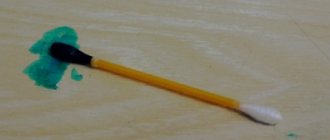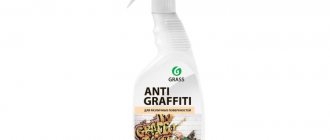Furniture stained with glue needs to be cleaned.
To choose the right product, you need to consider what material it is made of. Depending on this, a suitable composition is selected. Read the article about how to quickly and effectively remove glue from wood, plastic, metal and other furniture.
How to remove super glue from furniture
First of all, it is important to prevent such compounds from getting on furniture. If there is a need to glue a damaged decorative part, this must be done with caution. When working with glue, it is better to cover the surface of a table or other interior item with paper so that drops do not fall on them.
The glue is based on cyanoacrylate, which dries very quickly and is difficult to remove. Your task is to dissolve or soften it as much as possible.
To remove glue you may find it useful:
- scotch;
- rags and napkins;
- blade, knife or scraper;
- toothbrush and fine-grained sandpaper;
- hair dryer;
- soap or vegetable oil;
- toothpaste;
- acetone, dimexide, gasoline, white spirit;
- alcohol and vinegar.
Start removing with milder products and only if necessary, move on to strong solvents.
Remove glue from sofa, clean leather
How to remove glue from sofa upholstery?
Nothing can ruin the joy of purchasing a new sofa except the appearance of stubborn stains on its upholstery.
Most types of dirt can be removed from upholstered furniture without problems, of course, if you know what to use. However, few people know what to do with scorch marks, different types of glue, nail polish, ink, or if blood from the nose gets on the sofa. The best way is to use stain removers, solvents or the base that is part of the liquid that gets on the sofa upholstery. For example, you know how to remove glue from a sofa. superglue or "moment"?
How to remove glue: step-by-step algorithm
Before you clean the surface of super glue, you need to understand what material the furniture is made of. It can be wood, plastic, fabric, glass or metal. The most delicate material is wood. If it is untreated, it should not be wetted, nor should strong solvents or oils be used. Plastic is resistant to water, friction and many chemicals. Non-aggressive solvents should be used for fabric.
The algorithm for removing marks from furniture is as follows:
- Cover the stain with tape to avoid damaging the clean surface.
- If the glue layer is thick, cut it with a knife or remove it with a blade.
- Carefully protect the remaining marks with fine-grained paper.
- Wet the stain with water.
- If the stains are old, apply solvent to them using a cotton pad or rag.
- Wait a while for the product to take effect.
- Remove any remaining adhesive by scrubbing.
After completing the process, the area should be washed with a clean cloth.
If marks are difficult to clean, use a toothbrush. If there is a large amount of glue, use a spatula. It will easily remove the adhesive base softened with solvent.
Traditional methods of cleaning furniture
Home remedies are less aggressive and safe even for removal in the nursery. They are inexpensive and always at hand, but sometimes the procedure will have to be repeated to achieve the desired result.
If traces of glue are completely fresh and have not had time to dry, wipe the surface with a damp and then a dry cloth. You can also place a wet cloth on the stain to soften it and leave it for 24 hours. As it dries, moisten the cloth with water. After this, the residues are mechanically wiped off.
Other home remedies to remove super glue:
- Soap . It will help to wash off the Moment glue while it is fresh. To do this, dissolve it in warm water, moisten a sponge and rub off the stain. Toothpaste and soap will remove the glue from the glass surface.
- Hairdryer _ The thermal method is also effective in removing glue. An ordinary hair dryer will easily soften its base. To do this, blow on the stain for several minutes and then scrape it off the surface. If wooden furniture is coated with paint, do not heat it too much to prevent it from cracking. This method cannot be used for varnish coating.
- Oil . Safe natural solvent that is easy to clean. It is heated, a cotton pad is moistened and applied to the stain. After a few hours, wipe off the residue with a rag. This method is not used on untreated wood to avoid greasy stains.
- Acetone . Softens the composition and reduces adhesion to the surface. Saturate a cotton pad with it and erase traces of glue. After this, remove the remains with a dry cloth. The stain should come off quickly. If necessary, moisten a toothbrush in soapy water and wipe off any remaining solvent. The method is also suitable for removing marks from labels. The same effect is guaranteed by nail polish remover. Do not use such compounds on lacquered furniture. Liquids without acetone are suitable for them.
- Dimexide . Easily copes with superglue film. Soak a cotton pad in it, place it on the stain and wait 2-3 minutes. Remove residues with a damp cloth. The method is suitable for furniture made of plastic.
- Gasoline . Another effective solvent. Moisten a rag in it and wipe the stain using force. Residues are removed with a damp cloth.
- White Spirit . Remarkably softens the adhesive composition of chipboard.
- Hydrogen peroxide . To remove super glue from metal furniture, apply it for 10-15 minutes.
- Vinegar . It is safe to use its 9% solution. Exposure and cleansing time – 30 minutes. Essence is more effective, but when working, you need to protect your hands and mucous membranes from exposure to harmful fumes. It is also washed off with water at the end of the process.
- Soda . A small amount of water is added to it to form a paste. Apply to the stain and wait 2-3 minutes. After this, rub off the residue with force until it completely disappears. Finally, clean the surface with a damp cloth.
- Alcohol . Used if the table is made of glass or wood. Apply to the stain, wait 5 minutes and wipe with a clean cloth. Wash the area with warm soapy water. This method is not used on plastic, as unsightly stains will remain.
Most compounds only soften the glue components. Therefore, after using them, you need to mechanically wipe off traces.
Be sure to test the effect of the drug on an invisible area of furniture. If there are no traces left, you can erase the stain with it.
Removal with acetone
Acetone is often used to remove glue from the surface of a plastic table. The surface cleaning process is as follows:
Super glue instantly glues two surfaces, which may even differ in texture.
You can remove super glue by trying one of the methods suggested on our website.
- the solution is applied to a piece of cotton wool and rubbed over the area where the adhesive “plaque” has formed (when removed with acetone, the stain should dry completely);
- the product makes the stain soft and its adhesion to the damaged part of the countertop is reduced;
- then take a cloth and wipe the damaged area.
Be careful when using super glue, it will be quite difficult to wipe it off the table.
Everything has been removed, but the smell and traces of acetone remain. To remove them, use soap diluted in water. The solution is applied to an old toothbrush and the acetone remaining on the surface of the plastic is removed.
Acetone is one of the best table surface cleaners for super glue.
You can purchase acetone both in construction stores and in regular supermarkets.
Soap solution or toothpaste is often used to remove glue that has got on the glass, since other means for wiping it off spoil the properties of the glass being processed.
Clear nail polish will also make it easy to remove super glue residue on your desk.
Also, super glue is removed from the table surface using varnish. The principle of operation is the same as when removing with acetone, except that the varnish must be applied to the area to be wiped several times to soften the glue.
To clean the surface of super glue, it is best to use high-quality and professional varnish.
Household chemicals for removing superglue
If the furniture is very delicate and expensive, it is better not to experiment with folk remedies. For example, leather upholstery has pores into which the glue penetrates deeply, and it is better to remove it with a ready-made preparation designed specifically for this material.
- Lenis BAK 28-Aspo . The exposure time of the liquid substance is 5 minutes, after which the residues are washed off with soapy water.
- Anti-glue . Neutralizes the effect of superglue. It is applied to the frozen mass, kept according to the instructions and wiped off with a rag. Suitable for cleaning any surface.
- Contact . An effective glue remover that is placed on the stain and left for several hours. After this, wash it off.
When working with household chemicals, precautions must be taken. It is not allowed to come into contact with hands or mucous membranes. Do not inhale vapors from the cleaner. Work is carried out in a well-ventilated area.
What can you use to clean it off different surfaces?
Furniture can be made of wood or plastic, covered with fabric or leather. Depending on what surface the glue got on, the methods for removing it will differ. This is a fundamental point that cannot be ignored.
Wooden
You can remove traces of Moment glue or Superglue from wooden furniture by heating the contaminated surface. To do this you will need a hairdryer and a plastic spatula.
Procedure:
- Connect the device to the network.
- Select minimum or medium power.
- Bring a hairdryer to the stain and apply a warm stream of air to it. The distance to furniture should not be less than 5 cm.
- When the stain softens, remove it with a plastic spatula.
You can remove the glue using a solvent. Dimexide is a safe and potent agent. This pharmaceutical preparation is applied to a cotton pad, which is used to treat the surface until it is completely clean.
Despite the fact that the composition is used for medicinal purposes, in undiluted form it is capable of dissolving even the most stubborn stains. Therefore, you can only use it with gloves .
To get rid of PVA or office glue, you can use regular warm water and a rag. If the composition is more aggressive (silicate glue, liquid nails, Titanium), use “Solvent 647”.
Metal
Metal furniture is less sensitive to aggressive substances. Therefore, to remove Superglue, it can be treated with such compounds as:
- acetone and products based on it;
- petrol;
- vinegar essence.
These compositions are used according to a single scheme:
- Apply the selected product to the stain.
- Leave to act for 15-30 minutes.
- Clean the softened composition with a scraper and treat it with a cotton pad soaked in a solvent.
- Rinse the surface with water.
If there are concerns that the selected substance may harm the furniture, it should be tested on an inconspicuous area.
Stains from water-soluble glue are removed using a soap solution. Persistent compounds, for example, Moment or hot glue, are removed thermally.
Textile
The fabric used for finishing furniture is highly durable, so it can withstand exposure to many chemical compounds.
remove glue from it
using such means as:
Rub the stain with vodka until it completely disappears, applying it to a cotton pad or gauze folded in several layers.
Laundry soap and baking soda are diluted with a small amount of warm water . The paste is spread on the stain, left for 30-60 minutes, after which the remaining glue is removed with a clean, damp cloth.
Traces from labels, PVA or office glue can be removed with warm water. If the cover is removed from the furniture, it is washed by hand or in a machine, or treated with boiling water.
Do not use aggressive compounds such as acetone or paint thinner on the fabric. Even if they do not damage the material itself, scorched white spots will remain on it. It is not recommended to use vegetable oil, as it will leave a greasy mark on the surface of the furniture.
Leather is a delicate material. It may not withstand contact with caustic compounds, so the following means are used to remove glue:
- nail polish remover;
- gasoline for refilling lighters;
- vegetable oil.
After removing all visible traces, the skin is treated with a clean, damp cloth. The skin does not tolerate contact with caustic compounds, for example, with:
- undiluted acetone,
- acids,
- vinegar essence.
The surface should not be rubbed with hard objects or abrasives . Scratches will appear on it instantly.
Plastic
You can remove glue from plastic furniture using white spirit. It will dissolve the frozen base without harming the main surface.
Mode of application:
- Moisten a cotton pad.
- Wipe the surface with it until the glue is completely removed.
- If the layer cannot be cleaned, soak the stain, leaving the cotton wool as a compress.
- After 20-30 minutes, the final cleaning begins. If necessary, use a plastic spatula to remove any remaining softened glue.
If the stain was recently placed and the glue did not have time to “set”, you can deal with it using alcohol. Mode of application:
- Apply alcohol to a cotton pad.
- Apply it to the stain for 10 minutes. There is no need to remove the cotton so that the alcohol does not evaporate.
- Soak the swab in alcohol again and wipe off the glue.
It will not be possible to get rid of Superglue using less aggressive compounds, since it adheres firmly to the surface. It is not recommended to heat plastic furniture, as it is easily deformed.
To remove stains from PVA, office glue and traces of adhesive tape, use a soap solution, vegetable oil, and nail polish remover.
You can find out how to remove super glue from plastic here, and how to remove marks from stickers here.
Anti-inflammatory drug Dimexide - review
Is it possible to remove superglue from furniture? And what I got out of this is everything is written out.
My review is a little out of the standard because we are talking about a medicinal product, but the use is not for its intended purpose.
A little background. This happened several years ago. While I was busy in the kitchen, my 8-year-old son was left to his own devices. It seems like he was minding his own business, playing, but these playful hands are getting into places they shouldn’t. Through the glass of the closed door, I noticed that he flashed into the hallway and back. A few minutes later he went into the kitchen, took a clean rag, wet it and went into the living room. To the question: “Why and where?”, he said that “it is necessary.”
When I entered the room, I noticed that she was trying to wipe a stain off the upholstered furniture. He looked up at me, eyes full of horror. I started asking what kind of spot it was - it was silent like a partisan. Then he burst into tears and told me what he had done.
His terrible crime (for him!) was that he broke one part of a beautiful figurine brought from abroad. He tried to hide the “traces of the crime” by gluing the part back with superglue. One drop fell on the sofa.
And all “his crime” faded for me against the background of the word “superglue”! "SUPERGLUE", Carl! In the most visible place on the sofa!
To understand the scale of this “drama”, I’ll post a photo with a drop of water on the upholstery.
To say that I felt sick is to say nothing! The punishment found its hero, but to no avail.
Of course, I understood what superglue was, but somewhere, deep down in my soul, in its most secret corner, I hoped for a miracle. All the remedies that were at home were tested. As expected - no sense.
There was no furniture for even a year. Made to order in another city. We chose a model, separately upholstery based on color and quality. The pleasure was not cheap. And walking into the living room, this spot in the middle of the sofa was “like an eyesore.”
So what should I do? We went to showrooms where you can reupholster furniture. Of course, it’s not “rational” to reupholster the entire sofa because of a stain, but. it bothered me.
There was no such material in any of them. We contacted the manufacturers through the store, but they refused. They seem to have run out of this color. The circle is closed.
I had already come to terms with the situation and started looking for “something” on the Internet again. It all came down to one thing - you can remove any stains, but not from superglue.
God bless that person whose post I came across when I was almost desperate! Thanks for sharing your method! He told how you can remove a stain using Demixide. Trying is not torture. I bought it.
The fear was that I didn’t know what might happen. But she took a risk.
I took a cotton swab, soaked it in Dimexide and carefully, trying not to get it on the fabric, applied it to the stain. There was no reaction. I waited. Just wet that's all. I decided to touch the glue. I didn’t expect it - there was such a TEMPERATURE there! The glue stain was just hot! I was scared that it would suddenly burn everything out; a hole would be even less pleasant than a stain.
Specialized compounds
On sale you can find special compounds designed to remove glue from furniture.
Super Moment Anticley
The leader is “Super Moment Antikley”. It is used as follows:
- Apply the product to the stain precisely;
- cover it with a paper napkin;
- leave to act for 10-12 hours;
- remove with a soft cloth.
The gel is squeezed out through a small opening, so it is convenient to apply. It does not spread over the surface. The cost of Anti-Glue is about 100 rubles, so it is affordable for purchase for most people.
The main disadvantage of the product is its small volume, which is 5 g. To clean a large surface, you will need to purchase several packages at once.
Mellerud
The second place among the compositions developed for removing glue is Mellerud liquid. Instructions for use:
- Dampen a rag with the solution.
- Treat the contaminated surface.
- Leave for 5-15 minutes.
- Remove traces of glue.
Repeated contact with skin may cause Mellerud to crack.
The only drawback is the high price. For a 250 ml bottle you will have to pay 390 rubles.
Rounding out the top three is “KUDO: adhesive trace remover”. Instructions for use:
- shake the can vigorously;
- spray the composition onto the surface to be treated;
- leave for 30-40 minutes;
- remove the product with a dry cloth.
Adviсe
Despite the fact that today there are many effective ways that will help get rid of glue traces, you should still take into account some current recommendations:
- A fresh stain is always easier to remove than an old one. Try to do this without waiting for it to dry.
- If there is no special remedy at hand, then it is better to start removal with gentle methods, gradually approaching aggressive ones.
- Abrasive sponges and coarse bristles can leave abrasions and scratches on the surface.
- Processing should be carried out using rubber gloves, which will protect the skin from exposure to aggressive components.
- Any method should first be tested on an inconspicuous area.
To avoid difficulties when cleaning glue from surfaces, it is better to protect the surface from its contact by preparing the work area in advance. If glue remains on the furniture, be sure to take into account the type of adhesive. The labels of some products contain recommendations for working with the composition, as well as for removing stains.
Source: ubrano.online
How to remove different types of adhesives?
The easiest way to remove silicate (stationery) glue and PVA. You can remove sticky marks with soapy water.
The following substances can handle persistent compounds (Moment, silicate glue, Superglue, Secunda, hot melt glue, Titanium)
- Petrol.
- White Spirit.
- Acetic acid.
- Solvent 647.
- Alcohol.
- Acetone.
Professional cleaning products can be used to remove any type of adhesive.
Helpful information
In order to clean furniture from glue efficiently and without consequences, you need to take into account the following tips:
Softened glue is removed only with plastic or wooden means. Metal objects are not suitable for this, as they leave behind scratches.- Gloves are used to protect the skin of the hands.
- Do not leave the compounds on the surface for longer than the specified time.
- After cleaning is completed, the furniture should be treated with a clean, damp cloth.
Velours
Home Remedies
This type of upholstery is great at attracting dust; pets, even short-haired ones, leave visible traces of their presence. If the dirt is fresh, you should immediately remove the dirt with a not very stiff brush, then wipe the problem area with a weak solution of vinegar. A velor sofa does not really like a vacuum cleaner; all attempts to remove stains from the sofa using home remedies can hopelessly ruin the expensive covering. When purchasing such furniture, it is best to pay attention to models with removable covers so that they can be washed at any time.
Industrial cleaning products for furniture with velor or velvet coating
When purchasing design items with such capricious upholstery, it is best to purchase special care products at the same time. These can be both advertised drugs and not particularly well-known ones. The main thing is that they match the type of fabric with which the furniture is finished.
Cleaning services
The best option for this type of furniture. Professional equipment allows specialists in this field to remove almost all stains from fabrics that need careful treatment at home.
How to remove super glue
Let's try to figure out how to remove super glue from clothes, hands, plastic and other surfaces. There are several generally effective ways to remove superglue.
The most proven super glue removers
- Anti-Glue is a specially developed cleaner sold in all hardware stores. With its help, you can quickly and efficiently clean the material; to do this, you just need to apply a couple of drops to the affected area, wait for the reaction and wipe off the remaining substance with a napkin.
How to remove super glue from a plastic surface
Glue getting on the plastic is not a problem if only a few seconds have passed since then. You need to take a soft sponge and use it to clean the surface, fixing the result by using any degreaser. To remove dried stains, you must resort to one of the following methods:
- Superglue can be easily removed with pure acetone or nail polish remover based on this component. Take a cotton pad, soak it in the solution and treat the desired area. After a quarter of an hour, we repeat the manipulation. The same technique will allow you to get rid of drops of Moment glue on the surface of a plastic or wooden table.
- Gasoline can remove rubber glue, and the purer the product, the faster this can be done. In some cases, it is enough to blot the formation with the composition and repeat this after a couple of minutes.
- Before removing plant-based glue, it is necessary to prepare a solution of water, ammonia and denatured alcohol, taken in equal proportions. Apply the resulting product to the stain and rub lightly, repeat until the formation is removed.
- Wood glue and other products containing animal ingredients can be easily washed with detergent diluted with warm water. They will not damage the table surface, so intense movements are allowed.
- Almost any adhesive can be removed from the surface of plastic using car glass cleaner, solvent 646 and white alcohol. Just don’t rub the affected area too hard; it’s better to repeat the approach several times, acting gently and thoroughly. The glue stain needs to be dissolved, not erased.
- "Dimexide" - you can buy it at any pharmacy. The principle of removing glue is to wipe the stains with a cotton swab soaked in the solution. After treatment, items should be washed in warm water.
- Paint thinner - suitable for cleaning durable fabrics.
- “Contact” is a special product designed to remove adhesive contaminants.
- Nail polish remover - treat the stain with melon solvent and leave it for 20 minutes, then carefully walk over it with a hard sponge and wash
How to remove super glue from hands
How to remove glue from hands is to use nail polish remover. This method will take a lot of time, so be patient.
- Apply a product containing acetone to the areas of the skin of your hands where the glue remains and wait a little. After this, immerse your hands in a container with warm water and a soapy sponge and begin to remove dirt.
- If the glue is still fresh, you can remove it with vinegar water and soap or nail polish remover.
- You can use a pumice stone to try to cut down the stain.
- If you are allergic to chemicals, margarine will help. It is rubbed into the skin until the glue is completely removed.
- Washing powder mixed with water in a ratio of 1 to 3 will help remove stains within 20 minutes after application.
- Using a lemon-salt solution. Add two tablespoons of lemon juice and salt to warm water. The resulting composition must be rubbed into the glue stain until it comes off.
- Vodka will help remove glue from the skin of your fingers. You need to dip your fingers into a glass of vodka for 15-20 minutes, after which you need to treat the glue stain with a cosmetic scrub or salt.
If you don’t have nail polish remover in your house, or you don’t want to use it because of the strong unpleasant odor, replace it with dishwashing detergent. It includes a lot of active ingredients that will help you quickly cleanse your hands of Moment glue. Pour some liquid into warm water, stir, and, placing your hands in this consistency, try to remove any remaining glue using mechanical movements. Do not overdo it so as not to injure the delicate skin of your hands.
A kitchen sponge made of metal, a nail file, and sandpaper will also help in this matter. However, these methods are the ones that are best used as a last resort. With such a mechanical impact, you need to be very careful and correctly calculate the force of impact. Otherwise, you can damage the skin, leaving scratches and abrasions. Do it slowly, step by step and act as carefully as possible.
How to Remove Super Glue from Clothes
- Try scraping it off with a mild knife without damaging the fabric. The method only works when the glue has not yet smeared onto the clothes and the fabric is thick. The glue residue should come off the next time you wash it.
- If the glue stain is thick, try removing the glue from the clothing with a hammer. Lay the fabric out on a flat surface and hit the glue stain with a hammer. If it falls apart into several pieces, wash the fabric immediately with hot soapy water.
- You can also freeze the fabric in the refrigerator and then try to scrape off the glue with a knife.
- Using an iron, heat the stain through a piece of clean cloth. The melted stain will remain on the flap, and you can remove the remaining stain on the clothing using regular washing.
- A special “Anti-super glue” product will also help you cope with the problem, but do not forget that the product can change the color of the fabric. It is worth first checking its effect on an invisible area of \u200b\u200bthe fabric.
- If the stain is still fresh, thoroughly rubbing the stain with a rag soaked in gasoline may help.
- You can leave the item in hot water for a while, and then remove the stain and wash it.
- Quite often, a vinegar solution made from a spoonful of vinegar diluted in a glass of water helps. The stained area is washed with it, then rinsed in cold water and washed.
Neutralization with alcohol
Super glue can still be removed from glass and plastic tables using an alcohol solution purchased at a pharmacy. The process of removing dried stains using this method consists of the following steps:
Often, the use of super glue ends up leaving dirty marks on the surface; they certainly cannot be left without correction.
Super moment glue Secunda is distinguished by a very fast process of action.
- Apply alcohol to the place where the stain has formed;
- now you need to wait five minutes;
- wipe the solution with a clean, soft cloth;
- The wiped area is treated with warm liquid.
Alcohol will help you quickly and efficiently get rid of traces of glue. But remember, it is not suitable for every surface.
Although plastic may lose its color when treated with acetone, this is not as noticeable as if it is poured onto a wood surface.
Super moment glue can also be used in the professional field.
If you often need to use super glue, we advise you to immediately purchase the glue as a kit.
If a lot of super glue has been spilled on the surface of a wooden table and cannot be removed by other methods, and there is not enough money to buy expensive household chemicals, there is a completely professional method - removing glue from wood by applying varnish.
Super glue is sold in both large and small packages for one-time use.
To remove super glue from the surface of a wooden table in this way, you must perform the following steps:
Instant super glue bonds to two surfaces in no time.
Super PVA is also another durable type of glue that will give you the results you want.
- take sandpaper and carefully clean the damaged area;
- It is best to seal the area around with tape;
- if scratches occur, the area should be moistened with water;
- when the liquid dries, treat with fine-grained sandpaper;
- then the surface is primed with wax for the final removal of small cracks and better adhesion of the part of the object being repaired to the varnish;
- after complete drying, the whole thing is sanded again with fine “sandpaper” and wiped with a rag;
- then take a brush with a bristle attachment and apply the varnish in several layers with smooth movements;
- You must first select a dye of a similar color.
The process of removing super glue from the surface, although not quick, still requires maximum effort.
If there is not enough glue spilled on a wooden table, you can simply put a lamp or something else of your choice in this place.
Often you also have to clean super glue from the skin of your hands, which is also not easy.
How to Remove Super Glue
Super glue has the super ability to firmly adhere to the skin of your hands and clothes, to furniture upholstery and even plastic on cars .
One awkward movement and your fingers are glued together, and there is a snow-white stain on your jeans.
Since the problem is widespread, there are already many videos and tips on the Internet on how to clean super glue . As it turns out, there are many methods.
In this article we will list them briefly. That's why they are cheat sheets, so that you can come to the rescue quickly and in time.
Wash off hands, fingers and skin
The most common case: glue got on the skin of your hands and glued your fingers together.
Not much pleasant. Especially if you urgently need to run away from home on business.
You can quickly wash super glue off your hands, fingers and skin! There are several effective methods for doing this:
- Wet your fingers in warm water, apply baking soda and rub into the skin.
After a couple of minutes the glue comes off.
- Dip your fingers in alcohol. The glue dissolves not instantly, but evenly. After 1 minute it becomes whitish, after another couple of minutes it evenly falls off, as if a crust.
- Prepare a strong, warm soapy solution and dip your fingers in it to soften the skin of your hands and the stuck glue. Then apply a little shaving gel and carefully move the razor from top to bottom where the glue has hardened. Finally, wipe the skin with a cotton pad. There is no trace of glue left.
- Wet your fingers in warm water and sprinkle the places where the glue has dried with ordinary table salt.
Now you need to rub in the salt for 1 minute.The salt slurry must be moistened, otherwise nothing will work. Super glue is wiped off, you can go about your business!
- Apply the thick cream and wait a couple of minutes, then remove the glue with your nails.
- Soak your hands in a warm soda bath,
- Treat the skin where the glue has hardened with a cotton swab dipped in nail polish remover.
The glue is washed off by hand quite easily. The main thing is to wash your hands well with soap later to get rid of the pungent odor.
From clothes
Removing super glue from clothes is even easier. You don't even need to wash it.
Apply dry gauze to the stain on the front side and iron the problem area on the clothing through it.
The glue dries and falls off. You just need to iron it several times, shaking off any remaining glue.
Wipe off plastic (table, furniture, car)
The same Dimexide can remove super glue stains from plastic, furniture, squares, and phone screens
You need to proceed in the same way as in the case of laminate: moisten a cotton pad and treat the surface. The stain comes off quickly and easily.
Special waters are sold in stores, but they are not cheap. While Dimexide is mere pennies. The action is confirmed by countless videos in which video bloggers successfully wash super glue from different surfaces using this product.
"Anticle Supermoment"
This miracle tube looks the same as a regular tube of superglue, only the prefix “anti” is added to the name. It can be purchased at any hardware or hardware store. This remedy is very effective, because its purpose is to clean all surfaces affected by the “Moment”. These include damaged skin of the hands.
Anti-glue has proven itself to be excellent in the fight against stains on furniture, both wooden and leather. Trying to wipe the surface of a cabinet, table or sofa with acetone or a stronger solvent is strictly contraindicated. Instead of pinpoint drops, huge traces of stains are formed. It will be impossible to restore erased enamel.
If there is glue on the fabric, you can use cold to remove it by wrapping the product in a bag and placing it in the freezer overnight. In the morning, take it out and scrape off the dirt with a dull knife. You can also use the knife after soaking the fabric in a warm soapy solution.
The iron can help cope with contamination. Turn the soiled item inside out, attach white sheets of paper on both sides and iron the material well for ten minutes.
Acetone is also good for getting rid of stains on clothes and furniture, but first you need to test how it affects the color on an inconspicuous area. If everything is fine, moisten a cotton swab with solvent and rub until the stain disappears.
To clean blood from upholstered furniture at home, you can use regular aspirin. To do this, one tablet is dissolved in 200 ml of water at room temperature. Then soak a cotton pad in the resulting solution and wipe the contaminated area. The remaining product is removed with a damp sponge.
This tool helps to cope with various problems. Removing blood from upholstered furniture is no exception. To do this, mix salt (1 tablespoon) with a liter of water. The resulting composition is applied in a generous layer to the stain and left for an hour. Then take a clean sponge, moisten it with the same composition and carefully wipe the area of contamination. Under the influence of salt, the blood dissolves slightly, so it will be easier to eliminate it. When the stain has completely disappeared, remove the remaining salt solution using a damp rag. To remove excess moisture from the upholstery, at the end of the procedure, the furniture should be blotted with a clean, dry cloth towel. Table salt can be replaced with baking soda.
